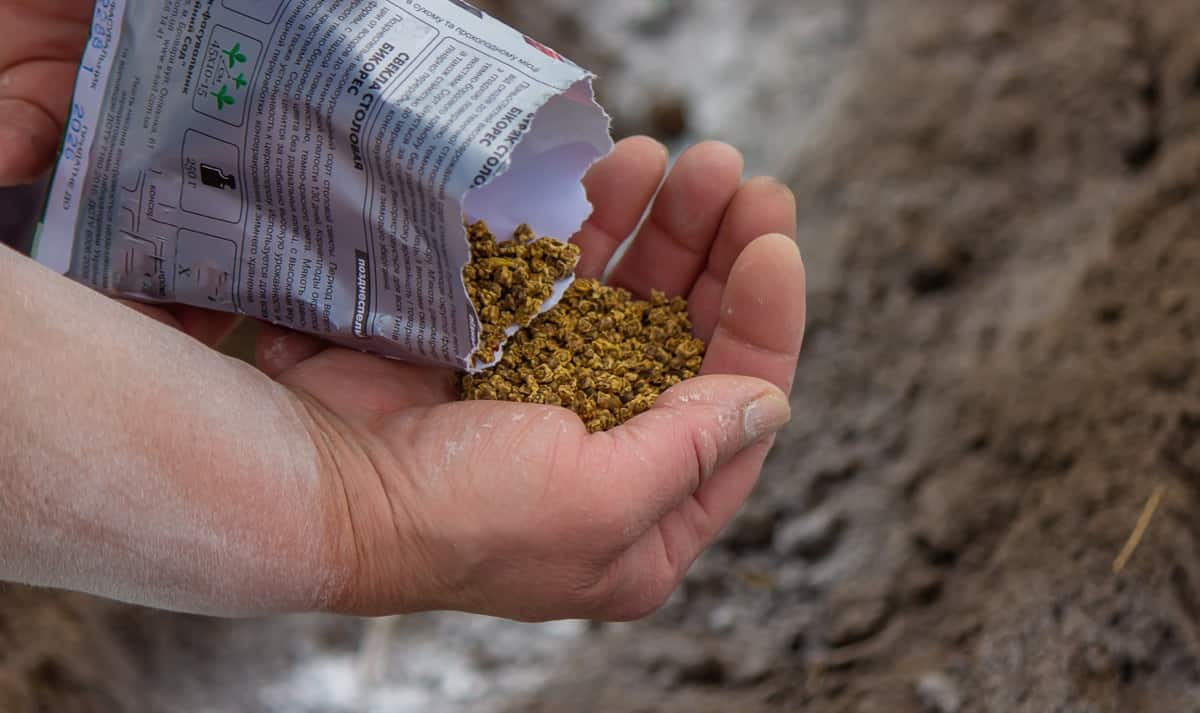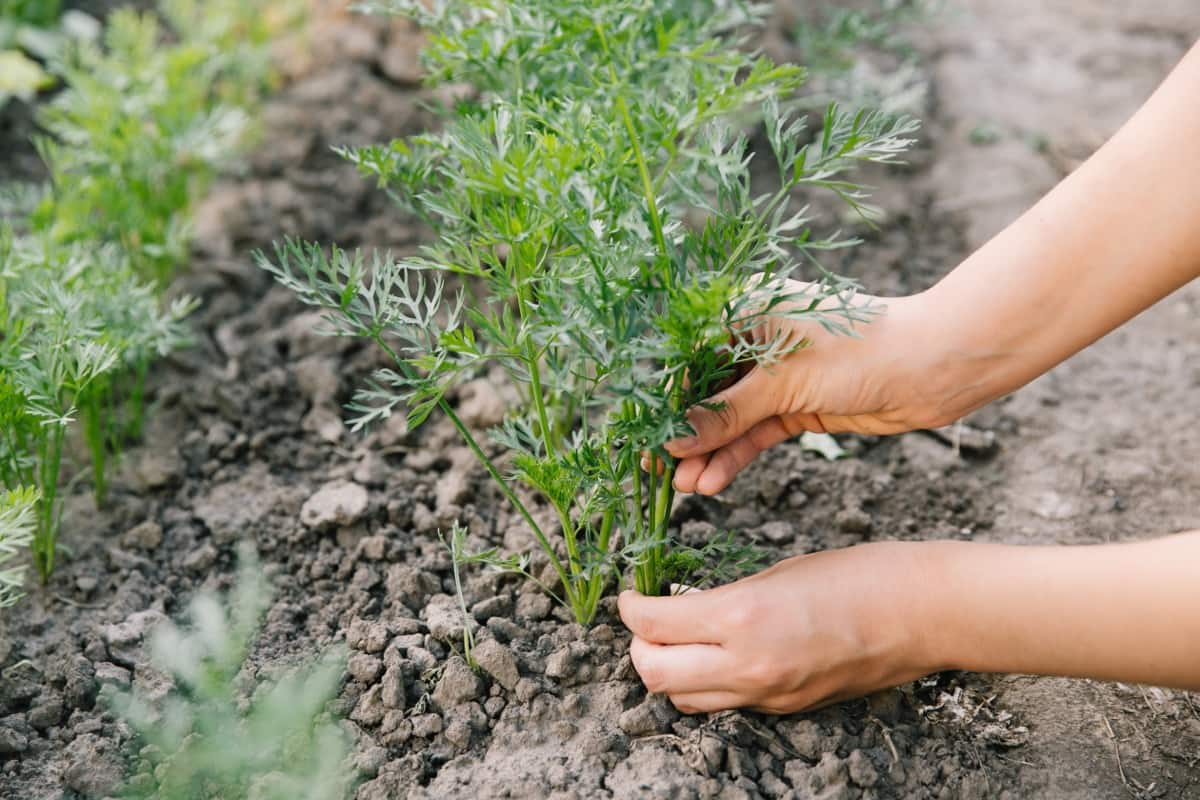Growing your own baby carrots at home can be a fun and rewarding experience. Baby carrots are not only delicious and nutritious but also add a burst of color to your garden. Baby carrots may be grown in pots or garden beds in any size yard or balcony. Below we learn how to grow baby carrots indoors, how to grow baby carrots at home, and about planting baby carrots in pots.

How to Grow Baby Carrots at Home
Choosing the Right Carrot Variety
Before you begin planting, selecting the right carrot variety is essential. While there are numerous types of carrots, not all of them are suitable for growing as baby carrots. Some popular varieties that are ideal for baby carrots include:
- Little finger: A small, slender carrot with a sweet taste and a tender texture.
- Parisian: A round, bite-sized carrot with a rich flavor that is perfect for container gardening.
- Babette: A short, slim carrot that is both sweet and crunchy.
- Amsterdam forcing: A fast-growing variety that produces slender, tender roots.
Preparing the Soil
- Carrots thrive in well-draining, loose, and fertile soil with a pH between 6.0 and 6.8
- Remove any rocks, stones, or large debris from the planting area.
- Loosen the soil with a garden fork or tiller to a depth of at least 12 inches.
- Mix in a 2-4 inch layer of compost or well-rotted manure to improve soil fertility and drainage.
- Check the pH of the soil using a soil test kit, and amend if necessary. Add lime to acidic pH, sulphur or peat moss to alkaline pH.
Planting Baby Carrots
- Baby carrots can be grown from seeds or transplants, but seeds are more commonly used due to the delicate nature of carrot roots.
- Choose a sunny location with at least 6-8 hours of direct sunlight daily.
- Sow the seeds directly outdoors about 2-3 weeks before the last expected frost date. You can plant seeds in the fall for a winter harvest in warmer climates.
- Space the seeds about 1 inch apart in 12-18 inches apart rows.
- Cover the seeds with a ¼ inch layer of fine soil or vermiculite, and water gently to avoid washing away the seeds.
- Keep the soil consistently moist until the seeds germinate, which usually takes 10-14 days.
In case you missed it: A Step-By-Step Guide for Growing Carrot Microgreens: DIY in Simple Way from Seeds in Containers

Caring for Growing Baby Carrots
- Thin the seedlings once they reach about 2 inches tall. Leave 1-2 inches of space between each carrot plant for proper growth.
- Water consistently, providing about 1 inch of water per week. Carrots require evenly moist soil to prevent splitting or cracking.
- To conserve moisture and prevent weeds, cover the plants with straw or grass clippings.
- Fertilize with a balanced, slow-release fertilizer after thinning the seedlings. Follow the package instructions for application rates and avoid over-fertilizing, which can lead to excessive foliage growth at the expense of root development.
- Weeds can impede carrot development by competing for nutrients. Hand-pull weeds or use a hoe to remove them gently, being careful not to disturb the carrot roots.
Pests and Diseases
- Carrot rust fly: Use floating row covers to protect your carrot plants from these pests, which lay their eggs near the carrot roots. Remove any affected plants and discard them properly.
- Wireworms: Rotate your crops annually and avoid planting carrots in the same location for more than two years. Encourage natural predators like birds by placing birdhouses near your garden.
- Root-knot nematodes: Practice crop rotation and plant-resistant varieties to minimize the risk of these pests. Adding compost and organic matter to your soil can also help suppress nematode populations.
- Carrot diseases: Many carrot diseases, such as Alternaria leaf blight and Fusarium wilt, can be prevented by practicing good garden hygiene. Remove any plant debris, use disease-resistant varieties, and avoid over-watering.
Harvesting Baby Carrots
- Baby carrots can be harvested when they reach the desired size, typically 3-4 inches long. To harvest your baby carrots:
- Use a garden fork to loosen the soil around the base of the carrot gently.
- Grasp the carrot tops firmly and pull the carrots out of the ground.
- Brush off any excess soil, but avoid washing the carrots until ready to use them, as moisture can cause them to spoil more quickly.
Storing Baby Carrots
- Remove the green tops, leaving about ¼ inch of stem attached to the carrot.
- Place the carrots in a plastic bag or container with small holes for ventilation.
- Store the carrots in the refrigerator for up to 3-4 weeks.
Growing Baby Carrots in Containers
You can still grow baby carrots in containers if you have limited space or poor soil. Choose a deep container with drainage holes, and fill it with a high-quality potting mix. Plant the seeds as directed above, and ensure the container receives adequate sunlight and consistent moisture. Container-grown carrots may require more frequent watering, as the soil can dry out more quickly.
Succession Planting for Continuous Harvest
Practice succession planting to enjoy a continuous supply of baby carrots throughout the growing season. Sow fresh seeds every 2-3 weeks until eight weeks before the first frost. This will ensure a steady harvest of fresh baby carrots.
Companion Planting for Healthier Carrots
- Tomatoes: Tomatoes can deter carrot pests such as carrot rust flies and help improve the flavor of your baby carrots.
- Chives: Planting chives near your carrots can help repel aphids and carrot rust flies.
- Lettuce: The shallow roots of lettuce won’t compete with carrots for nutrients, and their shade can help keep the soil cool and moist for the carrots.
- Radishes: Radishes mature quickly and can help break up the soil, making it easier for carrot roots to grow.
In case you missed it: How to Increase Female Flowers in Pea: Explained in 10 Steps for More Yields and Profit

Conclusion
Growing baby carrots at home can be a rewarding and enjoyable process. You can enjoy a bountiful harvest of these delicious and nutritious vegetables with a suitable carrot variety, proper soil preparation, and diligent care.
- Feed Your Flock for Less: Top 10 Tips to Save on Chicken Feed
- Ultimate Guide to Ossabaw Island Hog: Breeding, Raising, Diet, and Care
- Hatching Answers: The Top 10 Reasons Your Chickens Aren’t Laying Eggs
- Eggs and Economics: Breaking Down the Cost of Raising Backyard Chickens
- Defend Your Greens: Proven Methods to Keep Iguanas Out of Your Garden
- Ultimate Guide to Cinnamon Queen Chicken: A Comprehensive Guide for Beginners
- Ultimate Guide to California Tan Chicken: Breeding, Raising, Diet, Egg-Production and Care
- Ultimate Guide to Marsh Daisy Chicken: Breeding, Raising, Diet, and Care
- 10 Types of Chicken Farming Businesses You Can Start for Profits